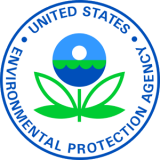HollyFrontier Oil Refinery in El Dorado, Kansas, to Pay $1.6M for Alleged Clean Air Act Violations

LENEXA, KAN. (JUNE 21, 2022) – The U.S. Environmental Protection Agency (EPA) will collect a $1.6 million penalty from the HollyFrontier El Dorado Refining LLC oil refinery in El Dorado, Kansas, to resolve alleged violations of the federal Clean Air Act (CAA).
According to EPA, the company stores regulated hazardous substances and failed to comply with requirements intended to protect the public from accidental releases of such regulated substances, and that failure contributed to a large fire that resulted in the 2017 death of a HollyFrontier employee.
“HollyFrontier’s operations presented a significant risk to its workers and the surrounding El Dorado community,” said EPA Region 7 Administrator Meg McCollister. “EPA is committed to protecting the health of all citizens, regardless of where they live, in big cities and small towns alike.”
An EPA inspection in 2014 identified alleged CAA violations at the refinery, which included the failure to evaluate hazards and compile safety information. Then in 2017, a heater tube ruptured at the refinery, resulting in the fire that led to the death of an employee. A subsequent investigation resulted in EPA alleging that HollyFrontier failed to design and maintain a safe facility and inspect and replace heater tubes.
In 2020, HollyFrontier entered into a Consent Decree with the United States and the state of Kansas, requiring the company to conduct third-party compliance audits at the refinery to evaluate compliance with the CAA Risk Management Plan regulations. The 2020 settlement did not, however, resolve the United States’ penalty claims relating to the violations identified at the 2014 inspection and the 2017 fire, which will now be satisfied through HollyFrontier’s agreement to pay $1.6 million.
Facilities that use hazardous, toxic, and/or flammable substances are required to comply with the Clean Air Act. The law’s “General Duty Clause” makes facility owners and operators responsible for managing chemicals safely. The CAA Risk Management Plan regulations require facilities that use certain quantities of regulated substances in their processes to develop a Risk Management Plan that identifies the potential effects of a chemical accident and the steps a facility is taking to prevent an accident, and spells out emergency response procedures should an accident occur. These plans provide valuable information to local fire, police, and emergency response personnel to prepare for and respond to chemical emergencies in their community.
EPA has found that many regulated facilities are not adequately managing the risks they pose or ensuring the safety of their facilities in a way that is sufficient to protect surrounding communities. Catastrophic accidents at these facilities – historically, about 150 each year – can result in fatalities and serious injuries, evacuations, and other harm to human health and the environment. Many more accidents with lesser effects also occur, demonstrating a clear risk posed by these facilities.
Reducing risks from accidental releases of hazardous substances at industrial and chemical facilities is a top priority for EPA, which identified this goal as one of seven National Compliance Initiatives in 2019.
# # #
Learn more about EPA Region 7
View all Region 7 news releases
Connect with EPA Region 7 on Facebook: www.facebook.com/eparegion7
Follow us on Twitter: @EPARegion7
